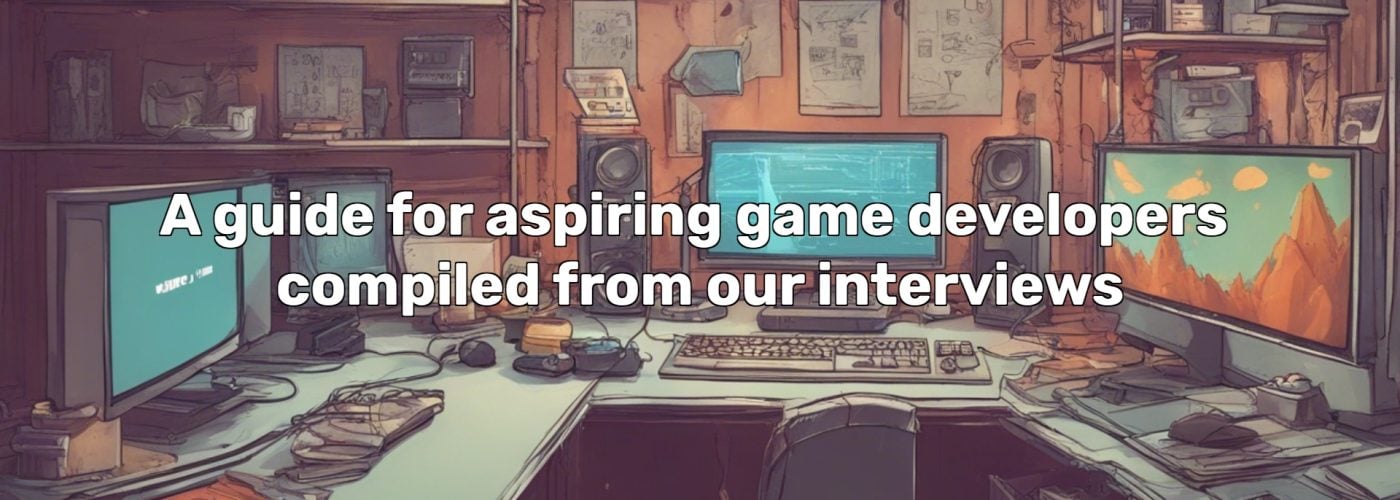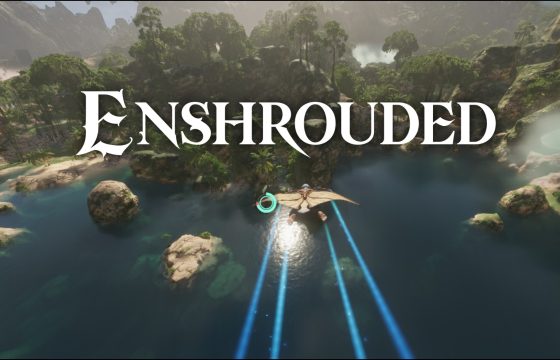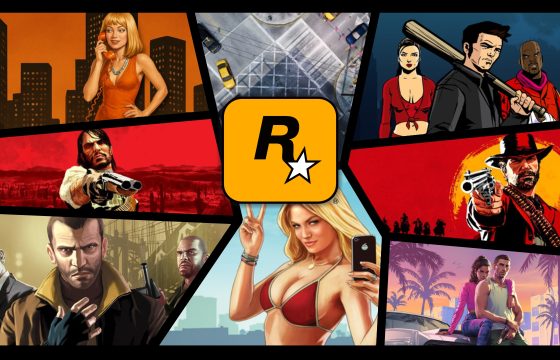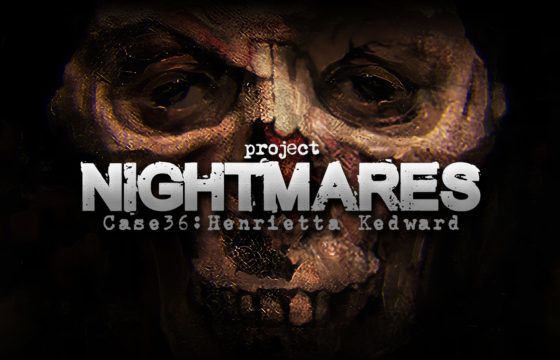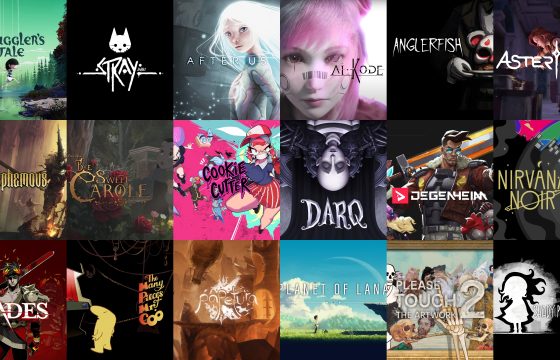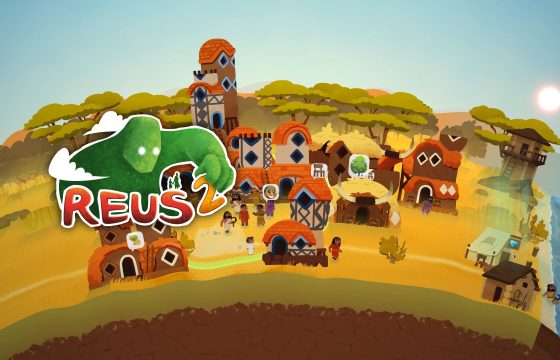What lies behind the development of an indie video game? What are the intentions, the path, but above all, the challenges?
This recap of some of our interviews is especially aimed at those who want to approach the world of development, those already fully immersed in it, and even the consumers of these products—products born from sacrifice, study, and passion—to help them understand that behind the game they spend hours, days, and sometimes months on, enjoying those precious moments of escape, there isn’t a faceless entity, or worse, a machine.
Understanding not only the technical side but, above all, the psychological and emotional aspects is essential to appreciate the hard work that inevitably awaits those who choose to embark on this adventure.
For these individuals, there is a wealth of inspiration in the interviews we had the pleasure and honor of conducting. They can benefit from the valuable advice of those who have gone through it or are going through it now, after making mistakes and adjusting course.
I believe it’s important, and useful, to share these experiences—not only to help new generations of developers but also to provide them with the right motivation, while avoiding the risk of underestimating the commitment that game development truly demands.
Thomas Waterzooi and Artistic Inspiration
Thomas Waterzooi, a Belgian developer and creator of the Please, Touch The Artwork franchise, comes from a background in photonic engineering, with both parents working in the artistic and creative fields. He later chose to study video game development, combining his passion for both technology and art. His career includes significant experiences at Larian Studios and IO Interactive, but it was after being laid off that he decided to become a solo developer, focusing on projects that reflect his personal interests and values.
In this interview, Thomas explains how randomness and instinct, fundamental elements for an artist, were at the heart of the creative process behind Please, Touch The Artwork. The game itself was born from a casual late-night experiment, in which Thomas created a Mondrian-style artwork generator, later adding interactive elements that brought the game to life.
Thomas emphasizes how video games represent a perfect fusion of technique and art. His decision to create a game accessible to everyone, even those who aren’t regular gamers, stems from his desire to offer gaming experiences that can also be appreciated by an adult audience with cultural interests.

Lastly, he reflects on the video game scene in Belgium, highlighting the dominant role of Larian Studios and the growing importance of government investments in the industry. However, he acknowledges the challenges of the field, especially regarding job stability and innovation in AAA games, which is why he chose to take the independent path.
“The Flemish government is actively investing in the video gaming industry, which is fostering growth and innovation. Despite being the underdog, Belgium is making its mark in the global gaming economy. It’s ironic that my game, despite its simplicity, managed to win a Google Play award. This reflects a shift in preference towards unique concepts over realistic 3D graphics.
While it’s a great time to be a game developer, there are challenges, especially in the AAA industry. Layoffs and risk aversion are prevalent due to concerns about industry stability and high interest rates. Innovating in AAA is difficult due to the substantial financial risks involved, impacting the livelihoods of those involved. There’s always a deeper story behind these decisions.”

Interview with Thomas Waterzooi
Studio Waterzooi Official site
Stefano Guglielmana and the Punk Soul of Cookie Cutter
How important is it to maintain the original nature of a work, even at the cost of being less “commercial” and, above all, less understood? As Emalloru, a content creator who gave a great presentation of Stefano Guglielmana, said when the release of his video game Cookie Cutter was just around the corner:
“Being understood is overrated.”
Stefano has a punk soul, and he has perfectly integrated this eccentric and colorful side into his work.

“I think what distinguishes us in the current videogame scene is that we not only aren’t afraid to listen to ourselves and follow our vision completely, but that we really like using our own sensibilities and experiences as references in what we are creating. The audience is not our focus when we are making decisions, but we are moved by the desire to mix stuff and have fun in a playful way. We try to build the game that we like and sometimes make really weird decisions and make them work, just for the sake of bringing a new flavor into our dish.
We love the idea that our role is to combine elements that we love in an unusual way, but also to give to this vision an enormous scale of love and respect, we don’t want to make sick jokes about stuff, we want to explore our capacities under our own terms.”
“I love to provoke, as an ex punk rocker provocation is my favourite communication form and I have seen the indie scene in this way lately, cookie-cutter products all made out of the same mould the idea of this resonates GREATLY with the production line that can happen inside an android factory. So when it came the time for Raffaele Romano to write the game, we worked together to incorporate the Cookie Cutter into our narrative and in a really serious way we worked hard to embed it in it. We almost always start with a vision and from there we work toward assembling it in a logical way into the game.”
In any case, behind the passion and love for one’s work, there’s also the stress and challenges of creating a piece that stays as true as possible to the original vision, but most importantly, maintains high quality.
“All Cherry animations are made in photoshop and built in Unity. Each Cherry animation sprite does not just have flat colours, but shades, highlights, details and even tattoos, and each new sprite requires a huge amount of work and time.
The game is animated 16 frames at second with some rare exceptions of 32 fps, but it will run at 60 fps. Cherry single animations can take from 8 to 20 hours, and some boss fights or brutal animations reach up to 40 hours of work.”
“It was amazing, horrible and lovely, we used all our sweat and blood and is something we feel super proud of.”
Today, we know that all this effort and the dream behind it have yielded great results, but at the time we interviewed Stefano, doubts and fears were certainly present. However, the proactive and positive spirit that defined the creation of this original and exceptional work held strong until the very end.
“I hope our massive hard work won’t go unnoticed, we are a small studio and this is our first product, there tons of stuff that we had to lear no the way and that make us skill on the go and this was our absolute best under this terms and conditions, we poured love and hard work into any pores of our beings, the rest is left to the judgement of the people.”

Interview with Stefano Guglielmana
Nacho Rodriguez and the Dilemma of Working in a Team
When you possess a strong creative spirit and have a specific vision for a work, it becomes challenging to share and convey the importance of every single detail to those who didn’t personally develop that particular idea. This is where Nacho Rodriguez, animator, director, and creator of The Many Pieces of Mr. Coo, a charming and surreal slapstick comedy, faced numerous challenges in collaborating with the company Gammera Nest, which was tasked with transforming Nacho’s Flash animation work into a Unity version.

“The most challenging aspect for me was not working solo. When I worked independently, I had complete control over the process without any major issues, except for the internal struggle for quality. But I felt the need for a team and partners, and I got into a mess. I was new to this industry, and unfortunately, I didn’t choose the right partners. Previously I was also coding it myself using an old Flash version for both game animation and coding. When we decided to take it to the consoles, the problems began.”

Interview with Nacho Rodriguez
X profile of The Many Pieces Of Mr. Coo
The Many Pieces Of Mr. Coo on Steam
Tom Ostafin and the Originality of the Indie World
Tomasz Ostafin, aka Petums, is one of the finest examples of absolute resilience and dedication, proving that starting with a creative, unusual, and above all, ambitious idea can indeed be realized. Though not without struggle, stress, and many sacrifices.
But Tom saw it through to the end and gifted us with one of the most original and visually striking video game experiences of recent years. We’re talking about Papetura, a point-and-click game entirely handcrafted using paper and simple tools like scissors and glue, where a masterful study of architecture and lighting brought to life a surreal and captivating world born entirely from the imagination of this talented young Polish artist.

“It’s been a long time since the beginning of the idea, more than 8 years ago I started working on the game, so I can already look at what motivated me in retrospect. Well, I think it was pure madness, a dream that I wanted to fulfill, so strong that nothing got in the way of it. It all started with my childhood passion for games and escaping from problems into the computer screen, until I encountered a very artistic game, which was Neverhood, and many years later Machinarium, which was a definite impulse for me to get started. I didn’t have the opportunity to join similar teams as Amanita, or get hired in gamedev, so I decided to do everything myself.”

Tylario and Lente: The Enthusiasm of the New Generations
TYLARIO
Tylario, aka Tyler Hudson, is a young independent developer at 20, nearing graduation from the University of Charlotte in North Carolina. Although early in his career, he has already demonstrated significant potential with the release of his hybrid survival horror, Dead Unending. Tylario chose his online pseudonym during his time with Agar.io, a game he enjoyed immensely and which inspired his name.
In the interview, Tylario shared his programming journey, which began at just 12 years old, and explained how he decided to get serious about game development in recent years, eventually bringing Dead Unending to Steam. The game, which blends elements of sandbox, tower defense, and incremental genres, was inspired by old favorites like BoxHead and Peggo!.
Tylario worked almost entirely alone on Dead Unending, with the help of a friend for the soundtrack and a teacher for voice acting. Among his inspirations, he mentions games like Portal, Stanley Parable, Minecraft, and Fortnite, as well as films like The Walking Dead and World War Z.
Despite still being at the start of his journey, Tylario has already achieved a fair amount of success, partly due to the exposure gained from YouTubers like CaRtOoNz. Finally, the young developer shared a message of encouragement for anyone looking to embark on the path of game development:
“There’s no point in where you go from being a kid to an adult.
You are just you.
And so if you are a young developer and you wanna make a game, do it, man. You don’t have to be an adult, there’s no difference, I promise. If you just pretend to act like an adult, people will treat you as one; and even if you don’t, no one cares. Make a game.
If that’s what you want to do, I think that’s amazing and I think more people should follow their dreams.
Go for it, because you may not have another chance to do it.
And that’s for everyone, not only for young people.”

LENTE
In this exclusive interview, we had the pleasure of speaking with Lente, the talented solo developer behind Spilled!. At just 23 years old, Lente has already captured significant attention, not only for her innovative work but also for her choice to live and work on a boat in the Netherlands. Growing up on a ship, Lente shares how this experience has influenced both her personal and professional life.
During the interview, Lente discusses the challenges and joys of life on the water, the pros and cons of such a unique existence, and how it has inspired her work. Spilled!, her latest project, is a relaxing and satisfying game focused on cleaning up oil spills, reflecting her passion for ecology and sustainability. Lente also talks about her creative influences, such as pixel art and her growing interest in issues like climate change.
With a unique perspective and a strong ecological message, Lente hopes to continue developing games that not only entertain but also raise awareness about environmental issues. Despite her initial success, she remains humble and focused, with the dream of becoming fully self-sufficient and continuing to create games that resonate with her passions. This interview offers a fascinating glimpse into the world of an independent developer determined to make a difference both in the gaming world and in the real world.
“When quitting school at the start of 2023, I definitely did not anticipate my first project to get this much attention.
I was ready to have many failing projects before some sign of success. However, from the start of this journey, I’ve mostly been confident in myself and my abilities. I knew that if I was smart about it and worked hard, I could achieve my dreams!”

Poopsy and the Need to Maintain Motivation
Poopsy, a 47-year-old former art director living in Amsterdam, has embarked on a solo development journey, working on the psychological horror The Lies We Tell Ourselves—still in development—with the desire to create something meaningful and complete.
However, he shared with us how, unlike Nacho Rodriguez, handling everything alone presents significant challenges. These difficulties are not only practical but also psychological and emotional.
“A recurring problem that seems to be shared by other developers as well, is struggling to keep the general motivation up.
Solo dev is mostly about micromanaging a stupid amount of stuff, which very often can feel a little overwhelming. On top of that, you’re the one in charge of giving yourself structure and pace, which is not as easy as one might think.
Finally, the industry itself is overcrowded by hundreds of games being released daily and ruled by questionable marketing practices which seem a little too focused on which streamer/youtuber plays your game, rather than how good your game actually is, to determine its success.
The result is that if a solo dev starts thinking about all that too much, they might quickly lose motivation and purpose, arguably rightfully so.”

Steelkrill Studio: The Real Work Begins After Finishing a Game
Ryan, the solo developer behind Steelkrill Studio, hails from Malta. Fueled by his passion for horror, he has demonstrated how a low budget combined with strong writing can create a well-crafted product, such as The Backrooms 1998.
“The hardest part being a solo indie developer is that you have to do everything by yourself and you have to always mentally prepare yourself to maintain motivation. The competition is very hard, especially when you are comparing yourself to bigger teams with other amazing talented artists. With all that being said, creating a game alone takes a lot of time and can be stressful at times.
Being an indie developer means you are not only creating games, coming up with new ideas, creating environments, story ideas etc. But you will also have to eventually learn other things. Marketing, promoting your game, testing it out, support and all the other things that come with it.
The ‘job’ won’t actually be finished after you created the game. It will just be starting because of all the other things you need to do related to marketing your game (especially) on a budget, trying to get your game out there and a lot of other aspects. Being an indie developer you have to mentally prepare yourself for every outcome, as this takes a toll on some people especially if a game does not meet expectations after you have been working on it for years. I saw it happen with a lot of other developers unfortunately, who had to give up their dream because of this and it also did happen to me at one point. You just have to keep pushing forward.
Despite all this, there are also a lot of advantages. One of them is that creating games makes me happy and I do feel that is a very important role when it comes to doing a job that you love!”

Interview with Steelkrill Studio
Steelkrill Studio Official website
Winter Crew and the Philippine Landscape
The choice to make video game development a profession is spreading and taking on increasingly elaborate, refined, and sophisticated forms worldwide, even in places where, unlike nations like Belgium, there is little government support in terms of funding.
Winter Crew is an independent game studio founded in 2020 in Malate, the vibrant and dynamic district of Manila, the capital of the Philippines, by the parent company CMD Studios. After years of intense and complex development, they have finally brought to light Fallen Tear: The Ascension, a fascinating and ambitious game that aims to blend and harmonize the complexity of Metroidvania-style gameplay with the distinctive features of the JRPG genre.
“Winter Crew was formed under CMD Studios in 2020 to make Fallen Tear: The Ascension. CMD Studios has been a running art studio for 10 years, and we render services such as game design, illustration, and animation. It has always been our dream to make our own game ever since, but we all know that making your own game is financially hard, so we started working for other people to save some money to boost our own production.”
“There has definitely been notable progress in the gaming industry here in the Philippines. It seems that people are increasingly recognizing the potential of Filipino developers’ talents. My current contribution is to create a high-quality game and serve as a role model for fellow developers. Should our game achieve success, I hope to share the insights and knowledge we have gained throughout its development.”

X profile of Fallen Tear: The Ascension
Katabasi Studio and the Development of Parthenope
Parthenope is an authorial project with immense potential and particularly high standards, conceived by the minds of two young creatives with a keen artistic sensibility, Fortuna Imperatore, aka Axel Fox, and Francesca Balestri, known on Twitch as “be_frankie,” founders of Katabasi Studio.
“(Fortuna): We’ve outlined a three-year development process. Last year, we had a productive meeting in Florence with producers from Devolver Digital and other publishers, which sparked substantial interest from Devolver. During that meeting, we presented an initial pitch, and they requested a draft of demonstrative material to better understand how we plan to bring the project to life. In response, I created a detailed business plan outlining the development milestones and key elements of the project. The feedback from the producers was very encouraging; they found our proposal both compelling and promising.
Our next step is to find investors who align with our vision for the project, ideally from outside the video game industry. I prefer this route to preserve maximum creative and authorial freedom, as publishers often bring their own criteria and constraints to the table, which can be limiting.”

To the question, “You started exclusively as a solo developer, right?” Fortuna replied:
“Yes, that’s correct. At the time, I was completely new to the field and unaware of the existence of video game journalism. Back in 2018, I couldn’t have imagined that there was a growing interest in video games in Italy.
However, things have changed significantly, especially since the 2000s. The gaming industry in Italy has expanded and gained more credibility. What was once considered a niche interest, associated with societal outcasts who played video games or watched anime, has now become mainstream. Being a “nerd” is more accepted and even celebrated today, partly thanks to the influence of TV series. The medium has evolved and continues to establish its place in popular culture.”
“(Fortuna): My thesis centers around this idea of the virtual world as a powerful and virtuous space. Video games convey messages and values that often go unnoticed in broader society and offer a depth beyond that of cinema and literature. They have the potential to educate and inspire spiritually, which is the essence of what my thesis explores.”
“(Fortuna): Many game studios rely on clichés and rigid frameworks, which is why many games, unless they are highly unique, fail to make a lasting impact. Our aim is to move beyond mere entertainment and appeal to a broader audience, including those who have never played a video game. We’ve already received interest from people who previously disliked video games but were intrigued by our trailer.”

Interview with Katabasi Studio
Katabasi Studio Official website
Max Trest and the Early Talent
Young Canadian Max Trest, founder of the independent game studio Lost Cartridge Creations, began developing games at the age of six or seven. By the time we interviewed him, while deep in the development of Astrolander, he was only thirteen.
Astrolander is his first real venture into the gaming world. It is a captivating cooperative interactive adventure (also playable solo) with a strong narrative component, designed to fully utilize the capabilities of the PlayStation 5 and the DualSense controller.

“I started programming when I was around six or seven years old, as I mentioned, using Scratch, which is quite block-based. I’d say it was a few years ago when I delved into Unity and later Blender. During that time, I also experimented a bit with Unreal Engine. Ultimately, I chose Unity because it felt a bit more user-friendly.
I must emphasize, though, it required a substantial amount of work, but it was truly enjoyable. I’ve had a lot of fun working on Astrolander, and progressing to create a PS5 exclusive game is truly exciting. So, yeah, it’s been quite a journey!”
“Follow your dreams! There are numerous online communities that will support you. For example, on Discord, I’ve found communities that played a crucial role in supporting my journey. Explore online tutorials, and you’ll find the resources to create your own game. The crucial step is to immerse yourself in the industry and gather people who can support you on your journey.”

Lost Cartridge Creations Official website
In this article, we’ve included excerpts from the various interviews, but to get the full picture, we recommend reading them in their entirety.

